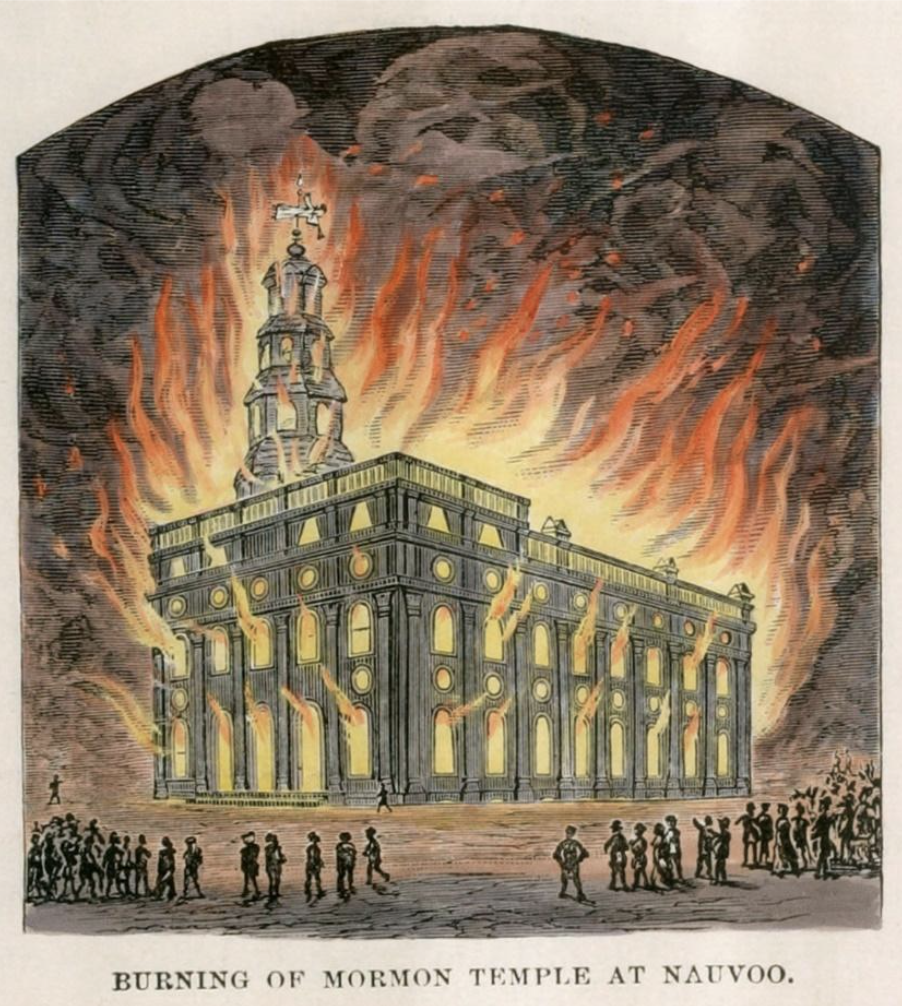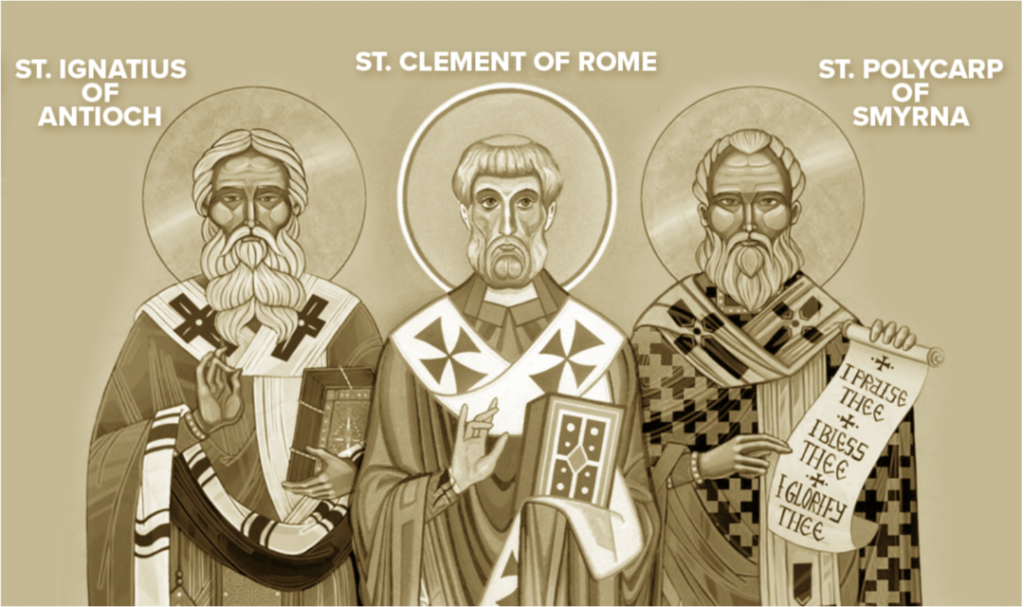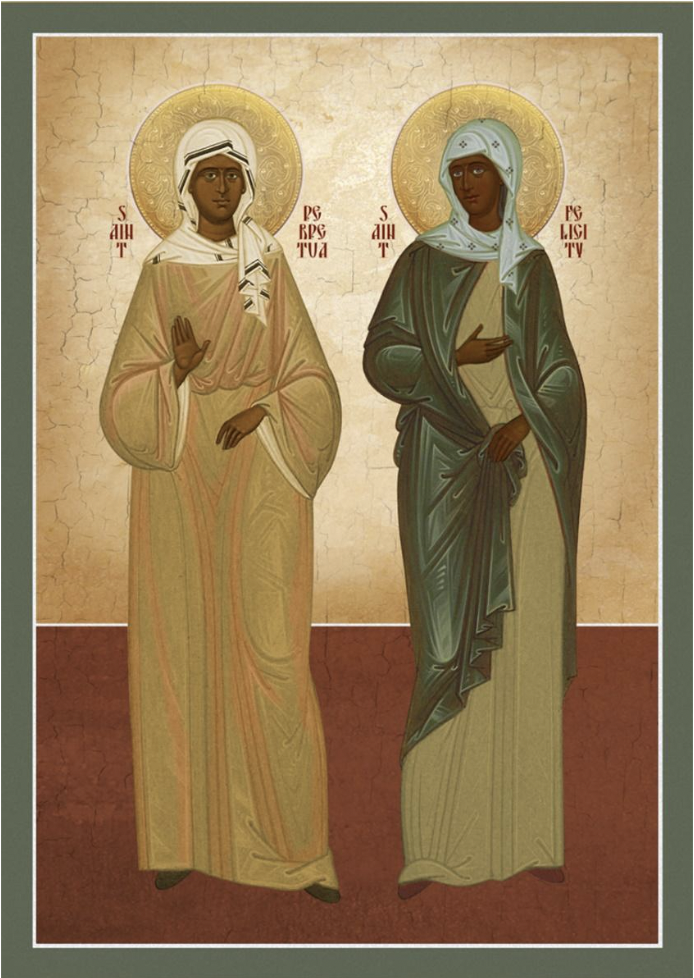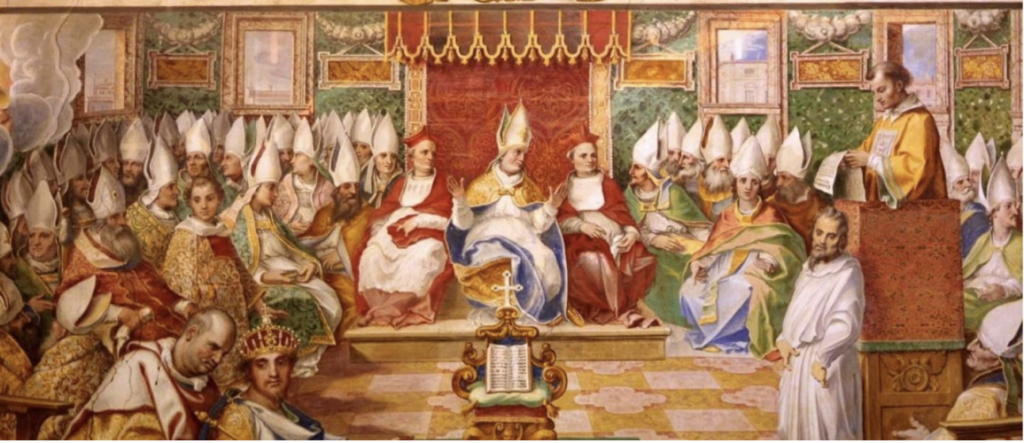

Apostasy When?
Written by Alisa Davis
When I first began to seriously investigate the Church, I read through Preach My Gospel several times on my own and the first lesson addresses the great apostasy; it says “after Jesus’s Apostles died, there was a widespread falling away from the gospel and Church of Jesus Christ. During this time, people changed many gospel teachings. People also changed priesthood ordinances, such as baptism. Priesthood authority and the Church that Jesus had established were no longer on the earth.” While it wasn’t difficult for me to accept the truth of the apostasy, I had already seen the fruit of it in my own Protestant background, I did find it difficult to believe that such a great falling away had happened so rapidly and easily after the death of the Apostles. I had grown up being taught that the early Christians were exceptionally valiant in defense of their faith and the teachings of the Apostles; they were imprisoned, tortured, burned alive, fed to lions, and all other manners of persecution. How could people so fierce in their convictions be the same ones that allowed false teachings to creep in? I also knew however, that my actual knowledge of the timeline and real events of the first couple centuries of the Christian Church was very limited so it is something I am wanting to gain a greater knowledge and understanding of. Naturally what I discovered is that history is so much more complex than the simplified and straightforward narratives so many of us, Protestant and LDS, are raised with.
Imagine with me, if you will, an alternate history of the restoration:

Joseph Smith has been martyred, Brigham Young has been sustained as the next prophet of the church and the saints are working diligently in Nauvoo to finish the temple and live out the teachings of Joseph Smith. Yet local persecution continues to mount, and the Prophet and Apostles decide it would be best for the Saints to disperse across many states and even countries. Each Apostle would lead a group to a new home where they would continue in the teachings of Joseph Smith as well as create bases for missionaries to share the Book of Mormon across the world. While it is to be expected that there would be opposition and persecution, the survival of the church seems more likely if it is found everywhere and gaining converts in all nations.
So they disperse, Brigham Young takes some of the Saints to Utah while the rest of the Apostles take groups to other far corners of the United States, Mexico, Canada, even traveling back to England and other nations in Europe, Africa, and Asia to form communities. And for a time, it seems to work; the Apostles correspond regularly with the Prophet in Utah, sending emissaries and letters back and forth to receive instruction and teaching, even traveling themselves to convene for Apostolic Councils. Yet eventually, wherever the Saints go, violence and persecution find them. The Apostles are martyred and so are their followers, some escape and flee to other communities taking with them what books and letters written by the Apostles and Prophet they can but sometimes nothing survives.
The Prophet writes letters of encouragement and appoints new Apostles to replace those who had been killed; some of the letters arrive, others are lost, some communities recognize the Prophet’s appointments while others who never receive letters choose from among those who were the most dedicated students of the previous Apostle. Yet other communities are torn apart by persecution and their members killed or fled. Traveling among these communities are men claiming to be the true Prophet and they convince some to leave with them and form new churches – men like Sidney Rigdon, Joseph Strang, William Bickerton, Grandville Hedrick, and others.
The US Army eventually marches on Salt Lake City and burns it, arresting Brigham Young and imprisoning him for a time before executing him. John Taylor is sustained as the next President of the Church as Saints everywhere continue to be imprisoned, fined, executed, and harassed for their beliefs. The Saints are viewed as a threat to local governments anywhere their numbers become too great and are often blamed for unfortunate events like the failure of crops that year or civil unrest. They are also seen as a threat to the social order through the practice of polygamy, establishment of separate interdependent communities, and tendency to convert women, native, and black members. Then the day comes when President Taylor is martyred, Wilford Woodruff had already died years before when the Saints that he had led to Manitoba were attacked and so had Lorenzo Snow. So Joseph F. Smith becomes President after John Taylor but his time is short lived when the US Army again marches on Salt Lake City and this time executes the Prophet, any Apostles who are there, and either executes or imprisons members of the 70. After this blow a new Prophet is never formally sustained, and no new Apostles are appointed.
There is no longer a President of the Church, but individual communities survive and many even thrive. Laws are then passed preventing members from obtaining identification, drivers licenses, or even being able to open bank accounts. Bishops are falsely accused of crimes, homes and meeting houses are burned, along with any copy of the Book of Mormon that can be found. Despite all this the church persists. Converts continue to fill the halls where churches are meeting and ordinances are performed in houses, stores, and even tents that are dedicated by the Bishop leading that community for use as a temple.
Communication between the communities is sometimes difficult but there are periods of peace in between waves of persecution where the Church can grow. Finaly in the year 2124 civil unrest across the globe erupts and the “Mormons” are blamed leading to the greatest widespread persecution that leaves 1 in 8 Latter-Day Saints dead. As a result a resolution is passed in the United Nations recognizing the Church and its members as a protected people group and banning further persecution in any member nation. With the ensuing peace and freedom, the Bishops of the now hundreds of churches and communities scattered across the globe are invited to gather at the United Nations Headquarters to convene the first Apostolic Council in over 200 years. It is an olive branch intended to bring unity to the persecuted church by allowing them a safe venue to elect a new President and to resolve important doctrinal disagreements that had developed over time, but the caveat is that the entire proceeding happens under the watchful “guidance” of the UN.

From the death of Christ in the year 33 AD to the legalization of the Christian faith in the year 324 AD the early church faced waves of persecution lasting many years that would see communities, leadership, and even tangible assets like buildings and documents targeted. Initially the Apostles remained close to Jerusalem but eventually they dispersed across the known world traveling as far as India, Russia, and possibly the British Isles. And, with the exception of Paul who was never fully or formally accepted by the 12 into their circle, the Apostles would base their ministries out of cities with large Jewish centers. As they made converts, they established independent churches, ordaining Bishops to take charge of the communities when the Apostle moved on to a new area [1]. These churches relied on their local leadership and communication from their Apostle to establish and maintain teachings and ways of doing things. From the beginning, even during the lives of the Apostles, there was disagreement among the communities regarding doctrines, procedures, and ordinances. The New Testament as we know it would not begin to take shape until the Muratorian Canon in 170 AD, and for the largely Gentile church the Hebrew canon of scriptures would be new material to them.
The general convert would have also likely been unfamiliar with the Jewish calendar of holidays and their prophetic significance and access to the full canon of OT scriptures would have required an investment of time and funds on the part of these communities into obtaining the scrolls. The challenges facing the early church were great and many people gave up their lives to preserve what they could from the Apostles in the face of heresies and persecutions. It would be nearly 300 years before the early church would find the freedom and peace that the saints in Utah were able to establish for themselves. Over those 300 years there are at least 10 distinct periods of significant persecution [2]:
First Persecution: Soon after the ascension of Christ in 33 AD Stephen is stoned in Jerusalem at an unknown early date. The two Apostles named James also face their deaths in Israel; James Zebedee, the brother of John, is murdered by Herod Agrippa in Israel in 44 AD and James the Less is stoned in Jerusalem sometime before its siege by Rome in 70 AD. In 64 AD, Nero blames Christians for the fire that destroyed most of the city of Rome, this starts the first major, widespread persecution of Christians. Many of the traditions about the manner of death experienced by early Christians comes from this period. The book of Acts is written no later than the year 66, likely as an encouragement to the remaining Apostles to continue to evangelize the Gentile world, even in the midst of persecution. Apostles Peter and Paul are martyred in the Colosseum in the year 67 AD as part of Nero’s persecutions. The remaining Apostles are also martyred, Philip in Turkey, Bartholomew in Azerbaijan, Thomas in India, Matthew in North Africa, Jude and Simon in Armenia, and Matthias in either Georgia or Ukraine. It seems that Andrew may have been the last to be martyred in Greece in 69 AD. So, in less than 40 years nearly all of Christ’s Apostles are gone and the church is left a scattered coalition of churches lead by Bishops ordained by the Apostles with no real central leadership and no cannon of scriptures beyond the Old Testament and any letters or copy of one of the gospels they may have received from an Apostle.
Second Persecution: In 95 AD, Emperor `Domitian persecutes Jews and Christians for refusal to pay taxes to build a temple to Jupiter and for not participating in Emperor worship. The Apostle John is exiled to Patmos during this period and is the only still living Apostle. Before their deaths the other Apostles had ordained Bishops in each of the regions that they had ministered in. Several of these men where hugely influential in the continued growth and further development of church doctrine and practice and are called the Apostolic Fathers. In their writings they write about the teachings they had received from the Apostles that are not included in the primarily Pauline New Testament, including the musteira – the secret teachings of Jesus that were for the believer only and to be shared within the context of the temple [3]. The Apostolic Fathers wrote letters and books expounding upon the developing Christian doctrines and attempted to provide correction as controversies and heretical groups flourished. Some of these men are Clement of Alexandria and Ignatious of Antioch who were ordained by Peter, and Polycarp and Papias who may have been ordained by John.
Unfortunately, information on the Apostolic Fathers and their writings is fragmentary.

Third Persecution: In 109 AD, Pliny, Governor of N. Asia Minor (the region around modern-day Turkey where the bulk of the Apostolic churches were established) receives instruction from the Emperor regarding how to deal with those caught converting to Christianity. Conversions were occurring at such a great rate that in 117 AD Emperor Hadrian executed 11,000 Roman soldiers who were converts along with two Bishops of Rome. Ignatius, Bishop of Antioch and disciple of Peter is martyred in Rome sometime in this period between 109 and 117 AD. Throughout the New Testament period and up through the fifth and sixth centuries women, and particularly the wealthy, aristocratic elite, were hugely influential in the spread of Christianity. They funded the ministries of Apostles and the Bishops that would take up their mantles, functioned as officially recognized Deacons and Priests, engaged in theological debates and teaching, and helped spread the new religion through the family unit – even as they simultaneously were instructed to remember their “place” in society. Christianity’s message appealed to the marginalized elements of Roman society, such as women and slaves, and large numbers were converted from those levels of society. This represented a disruption of the hierarchical order and was seen as a threat to Roman society that needed to be removed and was one of the motivators for the persecutions [4].
Fourth Persecution: In 121 AD, Marcus Aurelius established a policy of hunting down Christian converts across the empire and burned Jerusalem to the ground leaving nearly no survivors. Meanwhile, in the rest of the empire Christianity’s growing influence is gaining attention from the “thinkers” of the day who begin to write arguments against its central ideas. This inspired others to write arguments in defense of Christianity with the earliest known “apology” (i.e. defense) written as a letter to the Emperor by a man named Quadratus in 124 AD [5]. At this time a copy of the book of John was made in Egypt, fragments of which would become the oldest known copy of a New Testament book today. In 155 Polycarp, a disciple of John, is martyred and the Apologist Justin Martyr writes his treatise to the Emperor defending Christianity. Schismatic churches that promote teachings that are in opposition to those of the Apostolic Fathers and the Apologists begin to gain traction and even when their leaders are excommunicated the movements would last for several centuries. The Apologists are martyred throughout this period and the first early version of the New Testament Canon is established in 170, known as the Muratorian Cannon.
Fifth Persecution: 193 AD, Septimus Severus enacts a new law banning conversion to Christianity and violence erupts in Carthage, Alexandria, Rome and Corinth. A woman named Perpetua was one of those martyred in Carthage in 203 AD and is remembered for her diary that she left behind as the only known work of Christian writing by a woman from the Roman period of the church. She and other female martyrs gained great renown and respect within the church for their bravery “like a man” in the face of horrific torture and death. In Egypt 100 Christians a day are martyred. After the reign of Septimus Severus there is a brief period of relative peace for Christians.

Sixth Persecution: By the end of the second century “six generations have passed since the ascension of Christ. According to Barrett and Johnson the world is 2.4% Christian and 9.3% evangelized, with Scriptures translated into 7 languages and a total number of 177,000 martyrs, which is 1.5% of all Christians. This is at the rate of 1,200 per year” [2]. Origen is asked to lead one of the first early seminaries, or schools of Christian philosophical thought, in Alexandria Egypt. Origen is considered to be one of the most influential of the early church Theologians with his teachings and interpretations of scripture influencing western Christian doctrine until the sixteenth century. In 235 AD, Maximinus specifically targets the leaders of Christian communities.
Seventh Persecution: 249 AD, as the Empire starts to disintegrate Christians are blamed for anything that goes wrong and Roman citizens are required to carry papers proving that they have offered sacrifices to the Emperor or be killed.
Eighth Persecution: 258 AD, Valerian intensifies the persecution of anyone not participating in Emperor worship, forbidding Christians to assemble, and the bishops of Carthage, Alexandria, Rome and Corinth are killed. This policy would be reversed by Emperor Gallienus in 260 AD. By the year 300, “9 generations after Christ, the world is 7.3% Christians and 17.1% evangelized, with Scriptures translated into 10 languages. The total martyrs since AD 33 now is at 627,000. This means 1.3% of all Christians since the Ascension have been martyrs or at the rate of an average of 4,500 per year.”
Ninth: In 301 AD Armenia becomes the first country to make Christianity its state religion and in 303 AD, Diocletian “commanded the destruction of all Christian places, sacred texts and [imprisonment of] church leaders. This was the largest and bloodiest official persecution of Christianity. He offered the Christians to renounce their faith or be killed, especially in Italy and N. Africa.” “This persecution resulted in a number of defections and the destruction of all church buildings and Scripture portions that could be found. It is recorded that 3,500 formal or official executions of church leaders and bishops and an estimated 750,000 Christians killed or executed in 10 years of systematic slaughter.” There were roughly 6 million Christians in the world at this time meaning 1 in 8 died in the persecutions [7].
Tenth: 315 AD, the Edict of Milan is issued granting tolerance to Christians but Licinius, who is Emperor of the Eastern half of the now divided Roman Empire, continues the persecution of Christians. He is later defeated by Constantine who formally legalizes Christianity as a religion. By 350 AD the number of Christians in the empire had grown from 6 million to 30 million.

Under Constantine the empire is once again united and Constantine’s goal is peace, both civil and religious. The church’s tenuous unity by this time had begun to disintegrate with in-fighting between Bishops and the growing influence of heretical groups and teachings from Bishops that were not in-line with the generally understood doctrines of the church. Concerned about the conflict and with an interest in establishing peace, Constantine invites Bishops from around the empire to meet at his palace in Nicaea. There the council addresses the biggest theological issue of the day, defining the nature of Christ in light of the various heretical teachings that had been popularized over time. In particular addressing the teachings of Bishop Arius who argued that Christ “was different from the Father in essence being created by the Father at the beginning, thus Christ could not be eternal.” In the end it was voted unanimously to remove Arius from his Bishopric and under Constantine’s direction, and even influence, the Nicene Creed was drafted as a clear statement of the core beliefs of the Christian faith. The main focus of the council however, was not establishing a statement of beliefs but on resolving conflict between Bishops, the outcome being 20 cannons or “rules” that governed church process and policy. The unintended outcome of this was that the church became closely tied to governmental oversight due to the presence and oversight of Constantine during the proceedings. The church went from a beleaguered, loose coalition of independent stakes, known as “Sees”, to a largely unified church under the oversight of Rome [6].
However incomplete this brief and superficial summary of the first three centuries of the Christian faith this is, to me it seems clear that there was no one moment when an apostasy began. Rather it was a slow death by a thousand cuts over time to the integrity of the gospel, temple teachings, Apostolic succession, and ordinances. Hundreds of thousands of men and women lived and died to preserve what they were able to pass on as the core of the gospel; faith in a God who is Father to us all, in Christ who is messiah and the eternal son of God, in the Holy Spirit, the essential sacraments of baptism and communion, and the promise of the resurrection of the dead. These things were preserved at great cost so that one day, when the time was right, the fullness of the gospel could be restored and not snuffed out. When talking about and teaching of a Great Apostasy it is easy to frame it, even unintentionally, as the Great Failure of the early church. But by learning what our spiritual ancestors faced in defense of the Gospel it may seem more like a Great Tragedy. What I take from it, however, is the immense victory of the gospel, even when assailed by hell itself. We are the fortunate inheritors of an immense gift that was preserved for us through the life blood of martyrs. People who devoted themselves to passing on what they could to the next generation so that the world might know the Savior.
- The Search for the Twelve Apostles, William Steuart McBirnie, PH.D., 1973, Tyndale
- Missions History of the Early Church, Don Fanning, 2019, Liberty University, Academia.edu
- “Able to Know Heavenly Things” The Ante-Nicene Mysteries and their New Testament sources, Andrew I. Miller, 2015, Fair Mormon Papers and Review
- Women and the Early Church, Brent Shaw, 1994, History Today
- https://studythechurch.com/church-history/timelines
- https://www.churchhistory101.com/century4-council-nicea.php
- https://kyleorton.co.uk/2021/06/11/how-many-christians-were-there-in-the-roman-empire/

Prepare with Us
The Honey and Lilies Blog is dedicated to helping your prepare spiritually, mentally and emotionally, physically, and temporally.

Tune In
Join Meghan each week for inspiring messages, and diving into the scriptures to help you live the gospel, seek truth, and become a true disciple of Christ.

Dive Deeper
We are excited to offer online, self-paced courses to help you deepen your faith and understanding of the gospel and your covenants.
